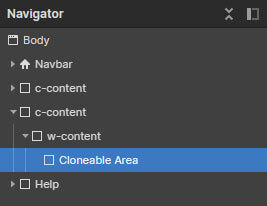Greenheys Manchester Science Park
House Of Social
Hexagon Tower
Barking Energy Centre
The Dalton Building
22 Handyside Street
St Michaels Phase One
Shoreline
NTU Design & Digital Arts Building
Farringdon Row MSCP
X1 Plaza
Christies Hospital
Kirkstall Forge
40 Percival Street
HMRC Regional Hub
245 Hammersmith
Bayside Vista
Helensburgh Leisure Centre
ARC University of Glasgow
Queen Street
Wadham College
Fulham Boys School
The Core
The Spark
Crown Street
CTAR Leeds Beckett University
Majestic Palm Court
White Hart Street
Ducie Street
Bournemouth Gateway Building
Bicameral Sculpture
Confucius Institute
Primark
Nexus
Special Olympics Cauldron
Chartist Tower
Collaborative Teaching Laboratory
Earl Grey House
Riyad Bank Tower
Thames Valley Science Park
The Record Hall, Hatton Gardens
ARM HQ
V&A Museum
Oastler Building
Leeds College of Art
Greenwich Energy Centre
St Pauls Place
Baltimore Tower
City of Glasgow College
i360 Brighton
Central Bank of Ireland
Grace Farms
Derby Arena
Alder Hey Children's Hospital
Savoy Cinema
12 New Fetter Lane
Guys Hospital Tower
Everyman Theatre
The Courthouse
Life Sciences, Bristol University
Library of Birmingham
Huawei Technical Centre
De Calypso
Park Hill
1 Valentine Place
Aquatic Centre
Titanic Museum
Imperial College
White Rose Shopping Centre
Cornelius Vermuyden College
BskyB Headquarters
Mann Island
One Hyde Park
Westfield Shopping Centre
Q Park Charles Street
New Museum of Contemporary Art
Lightbox
Wembley Stadium
Aviva Tower
2 London Bridge
40 Grosvenor Place
Fitzwilliam House
BBC White City
Tower 42
Scottish Widows HQ
Birmingham Health Innnovation Campus
Frequently Asked Questions
Got questions? We’ve got answers. Explore common queries about our anodising process, finishes, lead times, and more. If you need further assistance, feel free to get in touch!

.jpg)
How to clone into other project?
Press "Ctrl + E" or "Cmd + E" in the Designer and enable "Select on-page element".

Search for the class named, "Cloneable Area".

Copy the element inside this container to your own project.
Rename the classes accordingly if they are clashing with your project.
Ensure custom code from the in-page setting has been copied into your project as well (if there's any).
'Page Trigger' interaction can't be copied directly. You can only clone the whole project, or rebuild it.
A simple trick to copy the 'Page Trigger' interaction into another project is as below:
1. Create a dummy element.
2. Apply any type of 'Element trigger' into the dummy element and select the 'Page Trigger' animation.
3. Copy the dummy element with the animations applied into your new project.
4. The animation should have been copied into your project and you can reapply the 'Page Trigger' animation into your project.If you have further inquiry or need assistance, feel free to contact us.
Lastly, please do not copy this project and claim it as your own. We wish to continue sharing and giving to the community. In order to do so, we will need your cooperation and full support. Thank you very much,
%20(1920%20x%20800%20px)%20(1920%20x%20700%20px).svg)

.svg)
